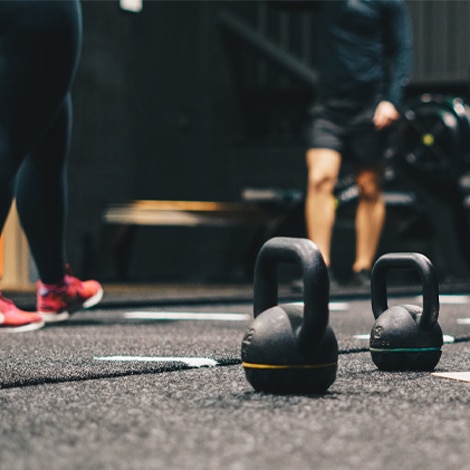By Maddison Jones, Mel McKeveny, and Brandon Yach
There are dozens of wearable devices on the market, with more being added all the time. How can your human performance staff separate valuable tools from marketing hype?
Based on our experience working with elite sports and tactical teams around the globe, we’ve identified six key steps to take when selecting wearables. By following these guidelines, you’ll increase the odds that your investment in wearable technology will have a positive impact on your human performance program and the ones you serve.
#1 – ALIGN WITH GOALS
Buy-in begins with a shared understanding of purpose. In sports or tactical arenas, it’s important to work closely with the leadership to understand what needs to be achieved and identify what qualities need to be developed to reach these goals. From there, identify a few core metrics that demonstrate athletes/servicemembers are advancing or need course-correcting intervention.
For example, let’s look at the original wearable: the pedometer. It measures how many steps a person takes and resulted in a baseline level of movement required to preserve health and reduce the risk of cardiovascular disease and other conditions. Because the pedometer was so easily tied to health goals, it remains a key feature of consumer wearables today.
When considering more sophisticated or innovative wearables, we recommend you apply a similar approach. Be clear about its purpose how it might indicate progression, regression, or stagnation in performance and/or recovery and how you’ll use the data to make more informed decisions.
#2 – CONDITION-SPECIFIC CONSIDERATIONS
Sometimes a certain device looks great on paper. But once in the hands of the players or servicemembers, it’s readily apparent it won’t work for them. For example, one GPS unit might sit inconspicuously in a small puck that’s clipped to a uniform, while another is a big brick that can be felt with every movement and is more of a distraction than anything.
The physical demands of the sport or unit also need to be taken into account. What works for one activity might be completely inappropriate or unpractical for another. For example, Olympic weightlifters won’t want to wear a smart ring because it could get caught on their barbells, whereas for a soccer player, such a device would be practical during training. Some of these choices are self-evident, while others require feedback from those being asked to use them.
#3 – STRUCTURED EVALUATION
Your performance staff should also test and assess wearables before deciding to buy. Come up with a list of question pertinent to how you plan to use the wearable and what you want to achieve. Below are some starter questions, but we encourage you to build on these.
- Does the device do what its manufacturer claims?
- How accurate is the data compared to gold-standard measures and how accurate do you need it to be for your purposes?
- If you already utilize similar devices, does it improve on what you’ve already got? If so, how?
- Is it suitable for repeated use, such as in weekly or monthly physical testing?
- Will it be durable enough to stand up to inclement weather?
- Does your league or governing body allow its use during competition?
Taking the time to pose and answer these types of questions makes it more likely you’ll choose a product that’s a help, not a hindrance.
Finally, dig into any available research on the type of product. Some technologies, like GPS, have years’ worth of trials published in peer-reviewed journals. Such studies often indicate if a technology is worthwhile or not and highlight specific best practices for their implementation.
#4 – INTEGRATION REQUIREMENTS
It’s all well and good for a wearable to function perfectly in isolation, but it won’t be beneficial without the ability to integrate into your daily workflows and with your performance management platform. One of the biggest advantages of a system like Smartabase is its ability to ingest feeds from a wide array of devices, aggregate the data, and present it in a manner that is both intuitive and actionable.
When researching the various wearables on the market, consider whether there’s an existing integration or if there’s an API or other way of getting data from the device into your performance management system. To get a device out in the field and working quickly, there must be a smooth setup and a seamless flow of information into whatever central repository will be used to store, analyze, and present the data.
#5 – PEER RECOMMENDATIONS
Reach out to your peers in other teams and organizations, even other industries, to find out which wearables they’ve implemented. Look for relevant examples with similar goals and challenges as your own.
When conducting your due diligence process, vendor-provided customer case studies can be a useful starting point that reveals real-world problem/solution situations. But don’t make this part of the process merely a box check – go deeper and ask vendors for references. Here are a few starter questions to ask the reference:
- Why did you choose this wearable?
- Did it meet your expectations?
- What benefit did it deliver?
- Was there anything unexpected about the implementation or use?
- What feedback did you receive from those using the wearable or working with the data captured from it?
- Would you purchase this wearable again?
It should quickly become apparent which solutions are truly best in class, versus those that are still a work in progress or should be taken out of the running because of buggy software, unreliable interfaces, or usability issues.
#6 – ACTIVELY INVOLVE COACHES AND PLAYERS
You can spend thousands of dollars on the latest and greatest wearable that collects gigabytes worth of real-time data and provides that “wow” factor. But unless it gets utilized properly by the athletes/servicemembers and coaches/leadership, it will be a waste of money.
It’s not enough to simply pick a wearable, explain it to athletes and coaches, and expect them to use it. Spend time educating all stakeholders on why a new technology is being introduced and linking it back to team goals. This will help garner greater buy-in initially and drive continued user engagement. But education is just the beginning.
Once you have a short list of wearables, cut through any marketing hype by asking your organization’s coaches/leaders if they have familiarity with any of the options, and work with them to establish a small testing program with influential team members to compare choices A, B, and C.
Assign someone on your team to be responsible for overseeing the testing, deployment, and ongoing use of new wearables. They should act as the liaison between the performance team and coaching/leadership staff and deal with any user adoption concerns from athletes/servicemembers. Actively seek feedback and ideas for improvement.
When selecting the right wearable for your human performance program, the more legwork you do during the assessment phase, the less headaches you’ll experience afterward. Soliciting coach and athlete feedback, researching both real-world use cases and evidence-based examples, and working backward from team goals will enable you to make sound decisions and implement wearables that will add value to your performance program.
IF YOU ENJOYED THIS ARTICLE, YOU MAY ALSO LIKE…
- How To Use an Athlete Management System to Create Accountability
- Course of Action for Your Military Human Performance Program
- How to Get More Consistent Data into Your AMS








